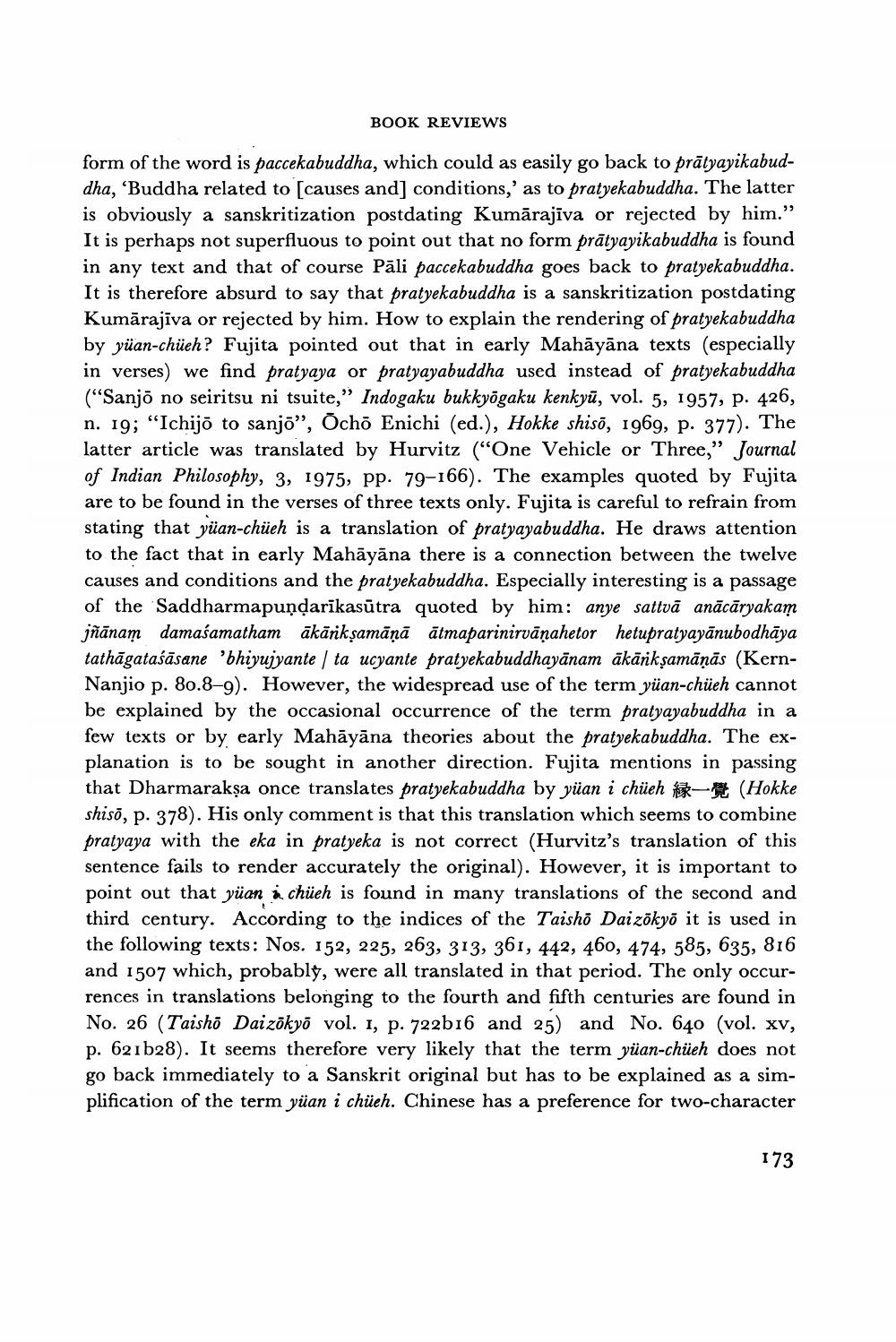Book Title: Book Reviews Of Scripture Of Lotus Blossom Of Fine Dharma Author(s): J W De Jong Publisher: J W De Jong View full book textPage 5
________________ BOOK REVIEWS form of the word is paccekabuddha, which could as easily go back to prātyayikabuddha, 'Buddha related to causes and] conditions,' as to pratyekabuddha. The latter is obviously a sanskritization postdating Kumārajīva or rejected by him." It is perhaps not superfluous to point out that no form prātyayikabuddha is found in any text and that of course Pāli paccekabuddha goes back to pratyekabuddha. It is therefore absurd to say that pratyekabuddha is a sanskritization postdating Kumārajiva or rejected by him. How to explain the rendering of pratyekabuddha by yüan-chüch? Fujita pointed out that in early Mahāyāna texts (especially in verses) we find pratyaya or pratyayabuddha used instead of pratyekabuddha ("Sanjō no seiritsu ni tsuite,” Indogaku bukkyōgaku kenkyū, vol. 5, 1957, p. 426, n. 19; "Ichijō to sanjo”, Ocho Enichi (ed.), Hokke shiso, 1969, p. 377). The latter article was translated by Hurvitz (“One Vehicle or Three,” Journal of Indian Philosophy, 3, 1975, pp. 79-166). The examples quoted by Fujita are to be found in the verses of three texts only. Fujita is careful to refrain from stating that yüan-chüeh is a translation of pratyayabuddha. He draws attention to the fact that in early Mahāyāna there is a connection between the twelve causes and conditions and the pratyekabuddha. Especially interesting is a passage of the Saddharmapundarikasūtra quoted by him: anye sattvā anācāryakam jñānam damaśamatham ākārikşamāņā ātmaparinirvāṇahetor hetupratyayānubodhāya tathāgataśāsane 'bhiyujyante / ta ucyante pratyekabuddhayānam ākārikşamāņās (KernNanjio p. 80.8-9). However, the widespread use of the term yüan-chüeh cannot be explained by the occasional occurrence of the term pratyayabuddha in a few texts or by early Mahāyāna theories about the pratyekabuddha. The explanation is to be sought in another direction. Fujita mentions in passing that Dharmarakṣa once translates pratyekabuddha by yuan i chieh - (Hokke shisā, p. 378). His only comment is that this translation which seems to combine pratyaya with the eka in pratyeka is not correct (Hurvitz's translation of this sentence fails to render accurately the original). However, it is important to point out that yüan a chüeh is found in many translations of the second and third century. According to the indices of the Taisho Daizõkyo it is used in the following texts: Nos. 152, 225, 263, 313, 361, 442, 460, 474, 585, 635, 816 and 1507 which, probably, were all translated in that period. The only occurrences in translations belonging to the fourth and fifth centuries are found in No. 26 (Taisho Daizõkyvol. I, p. 722b16 and 25) and No. 640 (vol. xv, p. 62 1 b28). It seems therefore very likely that the term yüan-chieh does not go back immediately to a Sanskrit original but has to be explained as a simplification of the term yüan i chieh. Chinese has a preference for two-character 173Page Navigation
1 ... 3 4 5 6
